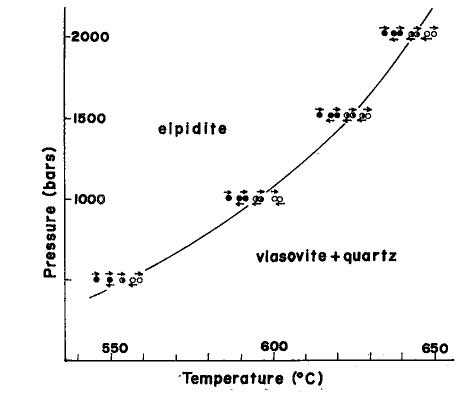Localities
At the Villedieu Township, Les Lacs-du-Témiscamingue, Témiscamingue RCM, Abitibi-Témiscamingue, Quebec, Canada, the commonest occurrence of vlasovite is as sub-rounded grains from 1-2 cm across surrounded by red eudialyte in a rock composed of K-feldspar, vlasovite, eudialyte, mosandrite and alkali-rich amphibole. The vlasovite is separated from the eudialyte by a thin rind of gittinsite. Less common are crystals of vlasovite up to 15 cm in length set in a matrix of K-feldspar and eudialyte (CM 12.211-214, CM 44.1349-1356).
At the type locality, Vavnbed Mountain, Lovozersky District, Murmansk Oblast, Russia, vlasovite occurs in the contact zone between pegmatites and fenites. It was formed in areas of strongly microclinised and albitised rock by replacement of eudialyte. Associated minerals include microcline, albite, arfvedsonite, aegirine, eudialyte, apatite and fluorite (AM 46.1202-1203).
At Ascension Island, Saint Helena, Ascension and Tristan da Cunha, vlasovite occurs in miarolitic cavities in ejected blocks of peralkaline granite (HOM).
Alteration
elpidite to vlasovite, SiO2 and H2O

Na2ZrSi6O15.3H2O ⇌ Na2ZrSi4O11 + 2SiO2 + 3H2O
(CA 23.577-582).
Back to Minerals